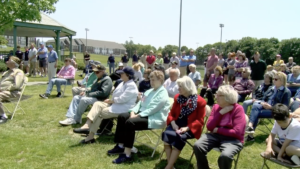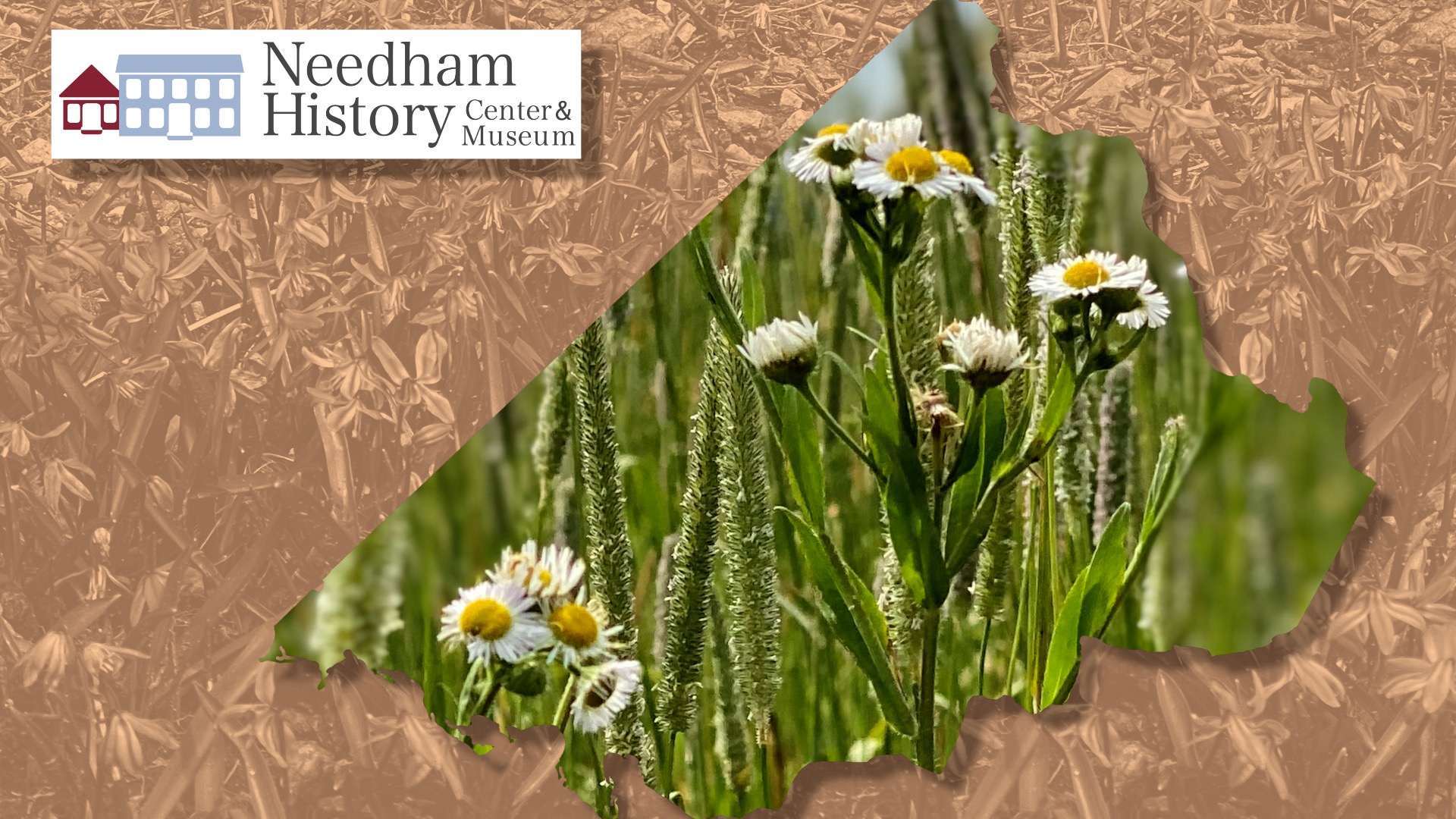
Needham History: The Noyes/Fuller Herbaria
A priceless record of nearly two centuries of climate and habitat changes in Needham
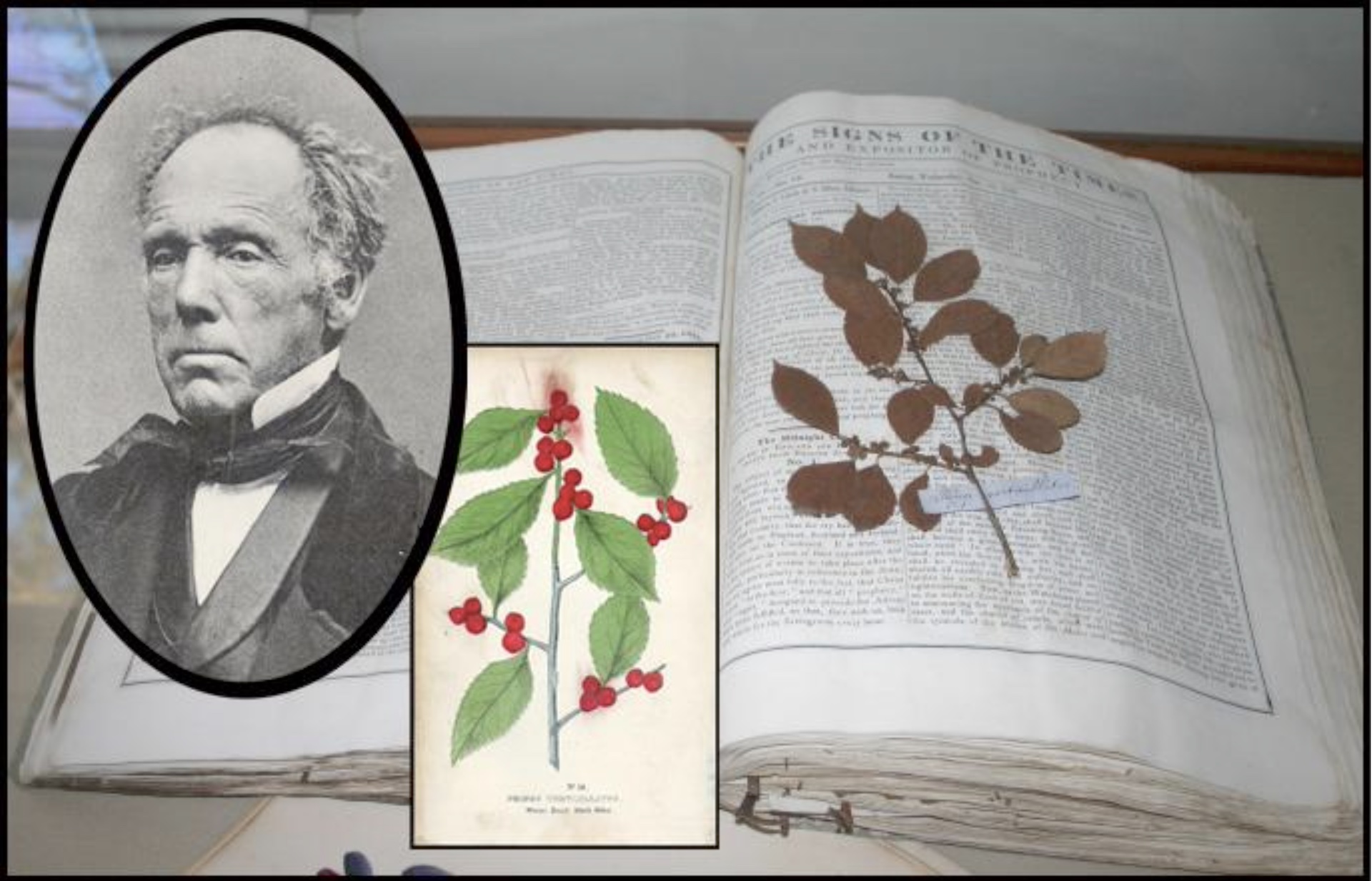 Dr. Josiah Noyes and one of his Needham plant specimens pressed in a book. The plant is Prinos vercillatus (Winter Berry or Black Alder), a species of holly native to the northeastern US. The plant is relatively common and grows in wetlands. Mostly used as an ornamental now for its red berries, it was used medicinally to reduce fever, and as an antiseptic and emetic.
Dr. Josiah Noyes and one of his Needham plant specimens pressed in a book. The plant is Prinos vercillatus (Winter Berry or Black Alder), a species of holly native to the northeastern US. The plant is relatively common and grows in wetlands. Mostly used as an ornamental now for its red berries, it was used medicinally to reduce fever, and as an antiseptic and emetic.
A Priceless Record of Botanical History
I have had occasion in earlier columns to mention Dr. Josiah Noyes, both as an abolitionist who organized Needham’s first anti-slavery society, and as Needham’s first licensed physician, who practiced in town from 1825 to 1871. He was born in Acton and went to college at Dartmouth. In 1825, having received his degrees in medicine and chemistry, he came to Needham because his uncle (pastor at the west parish church) told him he’d be needed here.
Noyes was trained in medical school as a physician and chemist/pharmacist, so he diagnosed his patients’ ills, and then compounded and dispensed their medicines. But Noyes was even more than that – he was a Natural Scientist in that broad 19th-century sense, when it was still possible for an educated person to know almost everything of importance in numerous disciplines. Through his own study, Noyes was also a botanist, geologist, zoologist, meteorologist, and geographer. He was a linguist who taught himself Hebrew in order to read the Old Testament. He advocated strongly for both abolition and temperance, and organized the Needham Lyceum as a forum for public education and debate.
Dr. Noyes began a systematic collection of Needham plants in the 1830s. In part, this was probably related to his work as a pharmacist, collecting medicinal plants; but his collections extended beyond that. In the approved 19th-century manner, Noyes pressed his samples between the pages of books. The Needham History Center has two of his collections (there were more). Each specimen was labeled – he used his scalpels to slit the stems and slip the label in; when the sample dried, the label was held firmly. He also recorded the precise location of his finds, so that later botanists could look for them as well.
Noyes was joined in this work by Timothy Otis Fuller. I’ve mentioned Fuller before as well, as the author/illustrator of the bird journals. Although we know Fuller’s ornithology work best, the bird journals were made late in his life. Most of Fuller’s natural history work was in botany, and he kept journals of this as well (alas! not illustrated).
A view of the Robert Fuller House (1707) on Forest Street, with North Hill in the background. The painting, by Timothy Newell Smith (c. 1860), shows how Needham looked in Noyes’ day. Areas that are now wooded were grassland at that time, having been cleared in the 1700s for use as pasture.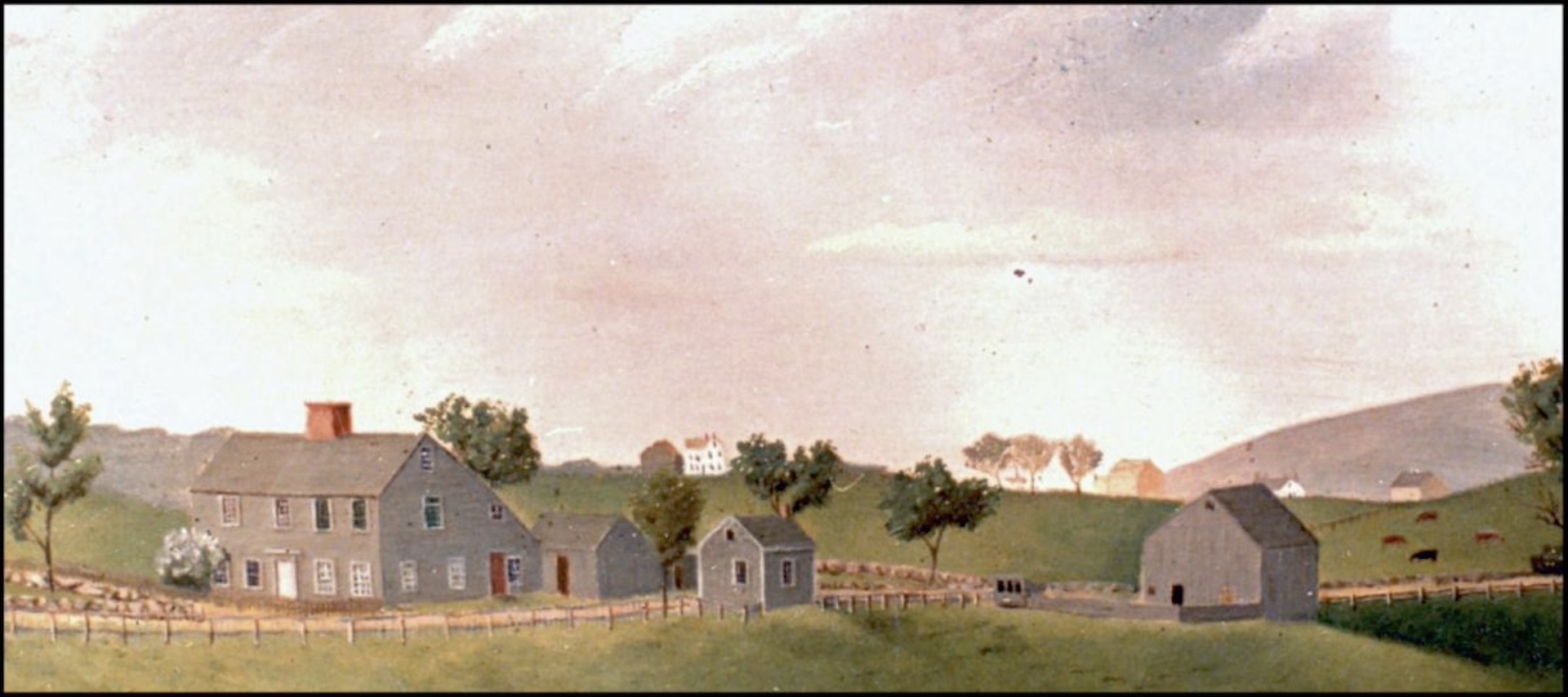
Fuller was a generation younger than Noyes, and was also his neighbor. Fuller’s family had been in Needham since the 1600s. Fuller became Noyes’ protégé in the matter of Needham’s natural history, and Noyes gave Fuller his natural history collections. Fuller especially valued Noyes plant collections and documentation, because they allowed him to make observations of changes in the local flora over time.
Fuller was patient and meticulous to a degree that I think would make most of us scream. But it meant that he was tireless in investigating corners and wastelands and places less accessible than most. He was especially keen on the topic of rare plants – not for their rarity per se, but because he wanted to know why certain plants persisted even in tiny numbers, while most either increased or died out altogether. He identified several very rare plants that occurred in limited or even single stands, and tracked them over years.
Fuller noted that even in his lifetime the town had changed. He conducted a survey of the Needham plant communities in 1885. He identified 691 species, of which 563 were native to New England. He noted, however, that even in his lifetime the town had changed, and that an increase in suburban development had already caused the extinction of several species that he and Noyes had collected previously.
Indeed, Fuller lived in a time of rapid ecological transition. Most of New England had been largely deforested by the mid-1800s. 19th-century paintings of Needham, as well as early maps and photos, show a cleared landscape of fields and meadows. Modern views of these scenes show significant regrowth of the tree cover. In Fuller’s time, the landscape was still changing; the decline of farming in favor of mercantilism and manufacturing, soon to be followed by the local transition to a suburban residential community, favored this process of modest reforestation. Thus the Needham landscape that Fuller knew was different even from Noyes’ day, and much different from the one we know today.
The Needham History Center preserves two of Noyes’ large pressed-book samples, but most of the Fuller/Noyes herbaria were eventually given to the New England Botanical Club, of which Fuller was a founding member; they are now a part of the Harvard Herbaria. Harvard’s Noyes/Fuller collection preserved about 2500 samples, which is the largest systematic collection from any locality in New England.
Many of these plants continue to thrive in our fields, yards, and roadsides. But others – more than 40%, especially among the orchids and ferns – are now extinct in Needham, while others are extinct in New England, and are threatened elsewhere. The Noyes-Fuller collection is a priceless document of nearly two centuries of climate and habitat changes in our town.
A sample of Anthemis arvensis, a variety of chamomile, collected by Fuller (in his sister’s house yard) and now housed in the Harvard Herbarium as part of the New England Botanical Club collections.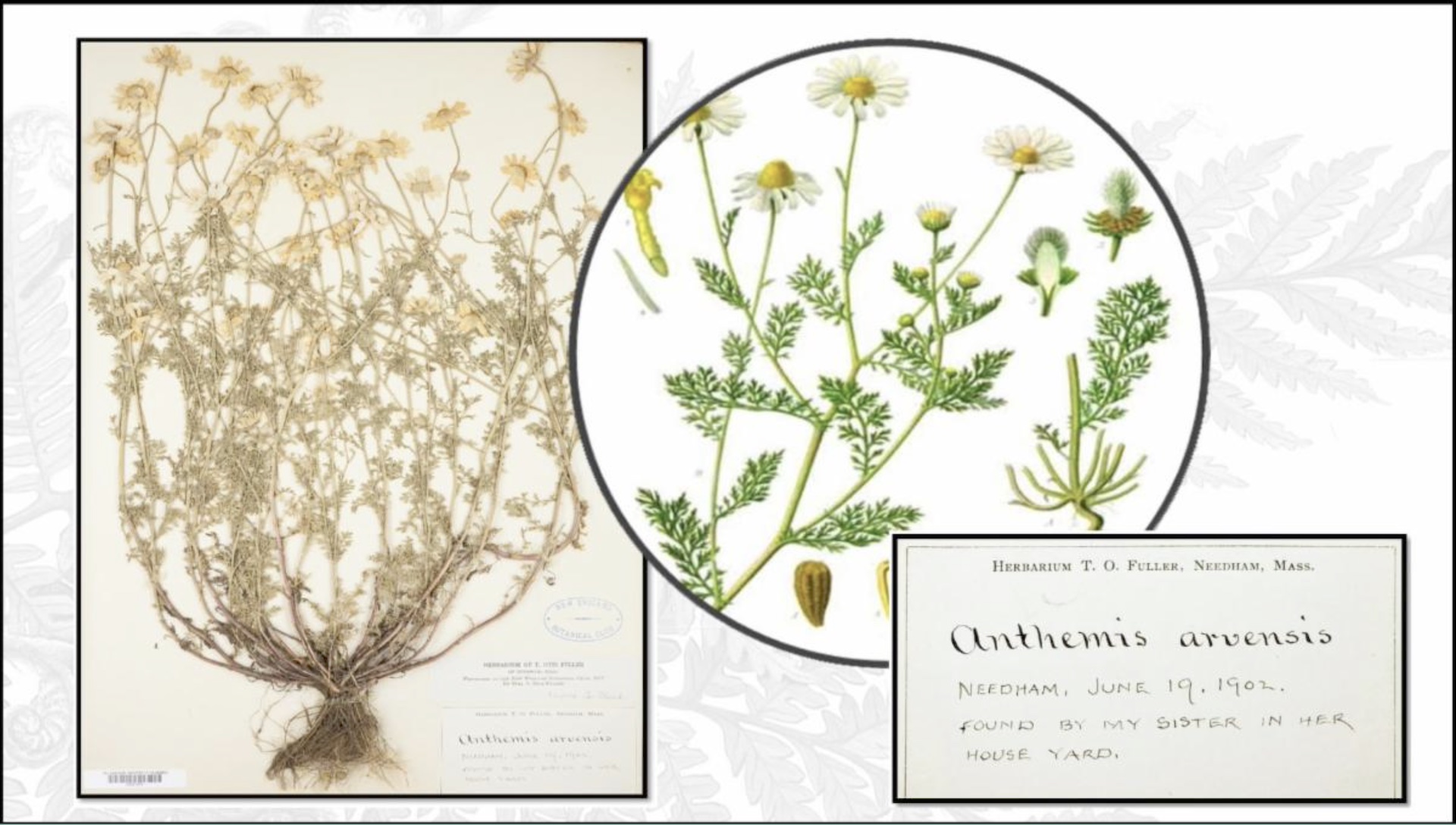
 |
Gloria Polizzotti Greis is the Executive Director of the Needham History Center & Museum. For more information, please see their website at www.needhamhistory.org. |
